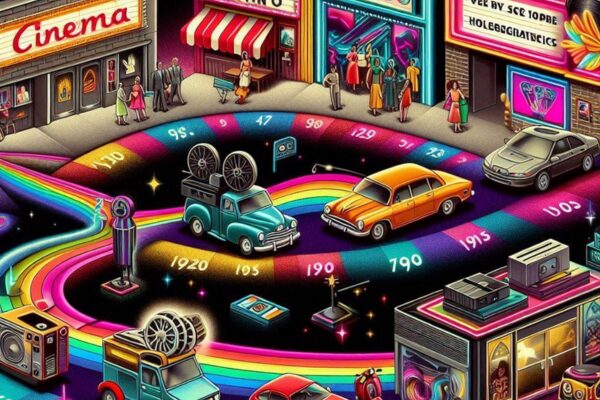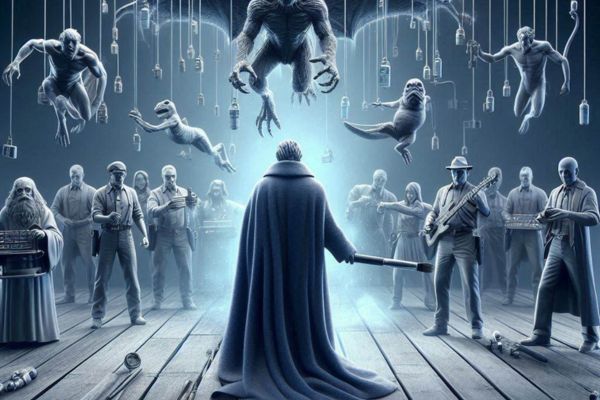the art of storytelling in movies
The art of storytelling in movies transcends mere entertainment; it serves as a powerful medium for conveying complex emotions, themes, and ideas. Through the intricate weaving of narrative elements, filmmakers transport audiences to different worlds, allowing them to experience a wide range of human experiences. In this blog post, we will delve into the significance of storytelling in cinema, explore its essential components, and examine how it shapes our understanding of characters and their journeys.
The Essence of Cinematic Storytelling
Cinematic storytelling is fundamentally about connection. The most compelling films resonate with viewers because they evoke empathy and provoke thought. At the heart of a successful movie lies a well-crafted narrative that draws audiences in, engaging their senses and emotions.
The Importance of Structure
A well-defined structure is paramount in storytelling. Most narratives adhere to a traditional three-act format: setup, confrontation, and resolution. This structure provides a framework that guides the audience through the story, ensuring that they remain engaged and invested in the characters’ journeys. For instance, classic films such as “The Godfather” and “Star Wars” exemplify this narrative architecture, allowing audiences to experience a satisfying emotional arc.
Character Development
Character development is another crucial element in storytelling. Audiences connect with characters who are relatable, complex, and undergo significant growth throughout the narrative. A film that invests time in developing its characters fosters a deeper emotional bond with the audience. For example, in Pixar’s “Inside Out,” the personification of emotions not only entertains but also provides profound insights into the human experience, illustrating the importance of understanding and embracing our feelings.
The Impact of Visual Storytelling
Visual storytelling in movies enhances narrative depth and engagement. Filmmakers utilize cinematography, color palettes, and visual metaphors to complement the story, providing layers of meaning that words alone cannot convey.
The Role of Cinematography
Cinematography plays a vital role in expressing the story’s tone and mood. Through camera angles, lighting, and composition, filmmakers can evoke specific emotions and highlight thematic elements. For instance, the use of shadows in films like “Blade Runner” establishes a dystopian atmosphere, while bright colors in “Amélie” create a whimsical and uplifting experience.
Symbolism and Imagery
Symbolism and imagery serve as powerful storytelling tools, enriching the narrative by adding depth and nuance. These elements invite viewers to interpret the film on multiple levels. A prime example is the use of the rose in “Beauty and the Beast,” which symbolizes love and sacrifice, encapsulating the film’s core message. Such imagery not only enhances the visual experience but also leaves a lasting impression on the audience.
In conclusion, the art of storytelling in movies is a multifaceted discipline that requires a delicate balance of structure, character development, and visual elements. It is through these components that filmmakers create immersive experiences that resonate with audiences long after the credits roll.
For further insights into the intricacies of cinematic storytelling, you might find this article on FilmSchoolRejects enlightening.
As we continue to explore the world of cinema, it is essential to recognize the transformative power of storytelling. Movies have the unparalleled ability to reflect societal values, challenge norms, and inspire change. They serve not only as a mirror of our reality but also as a canvas for imagination and creativity.
By understanding the art of storytelling, we can appreciate the effort that goes into crafting a film and the profound impact it can have on our lives. Whether it’s a heartwarming tale or a thought-provoking drama, the stories we encounter in cinema shape our perceptions and ignite our imaginations.
In essence, the art of storytelling in movies is a celebration of the human experience, reminding us of our shared emotions, struggles, and triumphs. As we continue to embrace this art form, we open ourselves to new perspectives and deeper connections with the world around us. For more information on the significance of storytelling in film, check out No Film School, a fantastic resource for filmmakers and film enthusiasts alike.



